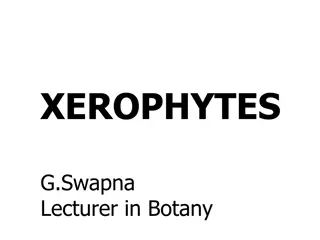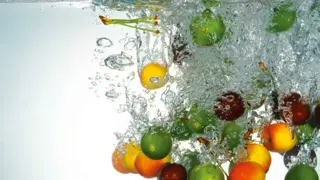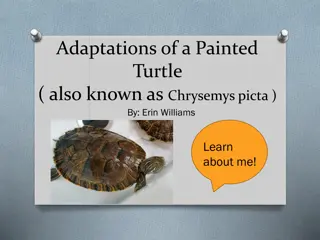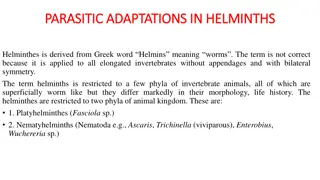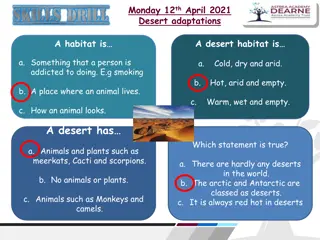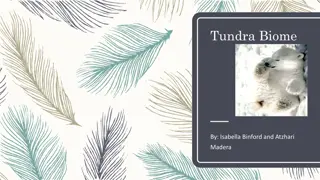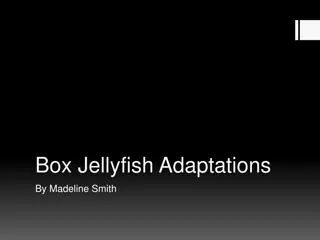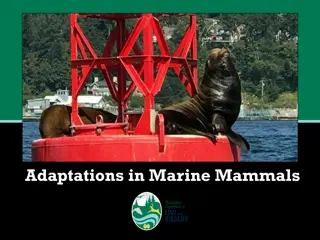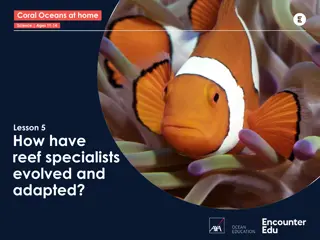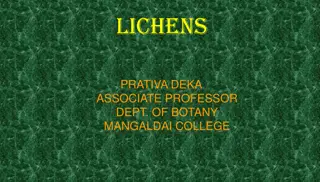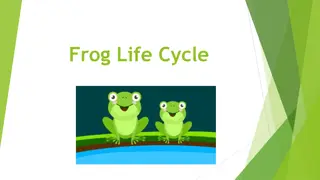Exploring the Fascinating Adaptations of the Portuguese Man o' War
Discover the remarkable aquatic specimen, the Portuguese man o' war, found in tropical waters. Learn about its unique adaptations, habitat, body structure, and fascinating commensalism and symbiosis with fish like Nomeus gronovii. Explore how strong winds can drive these creatures ashore and how they form colonies with specialized tentacles for protection and feeding.
Download Presentation

Please find below an Image/Link to download the presentation.
The content on the website is provided AS IS for your information and personal use only. It may not be sold, licensed, or shared on other websites without obtaining consent from the author. Download presentation by click this link. If you encounter any issues during the download, it is possible that the publisher has removed the file from their server.
E N D
Presentation Transcript
Aquatic Aquatic specimens specimens adaptations adaptations
Habitat / Food source Found mostly in tropical and subtropical waters, the Atlantic Indian Portuguese man o' war lives at the surface of the ocean. The gas-filled bladder, or pneumatophore, remains at the surface, while the remainder is submerged. Portuguese man o' war have no means of propulsion, and move passively, driven by the winds, currents, and tides.
Strong winds may drive them into bays or onto beaches. Often, finding a single Portuguese man o' war is followed by finding many others in the vicinity. Because they can sting while beached, the discovery of a man o' war washed up on a beach may lead to the closure of the beach.
Body structure Being a colonial siphonophore, the Portuguese man o' war is composed of three types of medusoids (gonophores, siphosomal nectophores, and vestigial siphosomal nectophores) and four types of polypoids (free gastrozooids, gastrozooids with tentacles, gonozooids, and gonopalpons), grouped into cormidia beneath the pneumatophore, a sail-shaped structure filled with gas.
The pneumatophore develops from the planula, unlike the other polyps. This sail is bilaterally symmetrical, with the tentacles at one end. It is translucent, and is tinged blue, purple, pink, or mauve. It may be 9 to 30 centimetres (31 2to 12 inches) long and may extend as much as 15 cm (6 in) above the water
Commensalism and symbiosis A small fish, Nomeus gronovii (the man-of-war fish or shepherd fish), is partially immune to the venom from the stinging cells and can live among the tentacles. It seems to avoid the larger, stinging tentacles but feeds on the smaller tentacles beneath the gas bladder. The Portuguese man o' war is often found with a variety of other marine fish, including yellow jack.
All these fish benefit from the shelter from predators provided by the stinging tentacles, and for the Portuguese man o' war, the presence of these species may attract other fish to eat
Chiton Chiton
Habitat / Food source Chitons live worldwide, from cold waters through to the tropics. They live on hard surfaces, such as on or under rocks, or in rock crevices.
Some species live quite high in the intertidal zone and are exposed to the air and light for long periods. Most species inhabit intertidal or subtidal zones, and do not extend beyond the photic zone, but a few species live in deep water, as deep as 6,000 m (20,000 ft).
Chitons are exclusively and fully marine. This is in contrast to the bivalves, which were able to adapt to brackish water and fresh water, and the gastropods which were able to make successful transitions to freshwater and terrestrial environments.
Body structure Chitons have a shell composed of eight separate shell plates or valves. These plates overlap slightly at the front and back edges, and yet articulate well with one another.
Because of this, the shell provides protection at the same time as permitting the chiton to flex upward when needed for locomotion over uneven surfaces, and even allows the animal to curl up into a ball when dislodged from rocks. The shell plates are encircled by a skirt known as a girdle.




